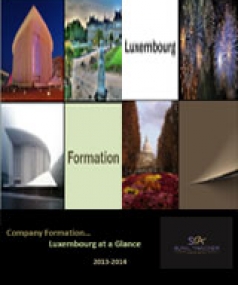Effect of recent bankruptcy legislation on those businesses facing difficulties because of cash flow issues
The recent overhaul in the laws governing insolvencies of domiciled companies in the United Arab Emirates (UAE) vide the new UAE Bankruptcy Law (December 2016) ensures that most corporate insolvencies are resolved through the consensual restructuring of debtor entity’s liabilities since market participants were reluctant to rely on legislation that was essentially untried. Indubitably, the Bankruptcy Law (the Law) is influenced by several features of insolvency law regimes in different jurisdictions, coupled with international trends. It focuses on the early restructuring of indebtedness for troubled companies.
A key limitation under the Law is that secured creditors are not constrained by proceedings initiated under it, such that the security persists to be capable of being enforced [upon obtaining permission from the court in the case of Protective Compositions (explained below)] outside of such proceedings. As a result, it is likely to perturb the effectiveness of the Law in practice, and may also limit the instances of debtors in huge financing transactions seeking under this Law.
The Law applies to all the companies that have been established under the Commercial Companies Law, as mentioned in Article 2 (1) of the Law. This Law does not apply to the companies that are partly or wholly state-owned unless they have chosen to come within the ambit of the Law by providing an application for the same in their company constitutions. This provisions of this Law also apply those establishments and companies in the Free Zones that are subject to provisions of Federal Law No. (8) of 2004 on Financial Free Zones, that are not governed by other provisions regulating financial restructuring, protective composition procedures and/or bankruptcy. Lastly, Licensed Civil Companies that are carrying out professional activities fall within the ambit of the Law.
The key court-driven procedures in focus expand to Protective Composition and Bankruptcy. The tests that determine when a company is insolvent have been clarified and made comprehensive. The cash flow test which applies when a debtor is unable to repay his debts by this Law also introduced an alternative balance sheet test which applies when the current liabilities by are debtor are not covered by his assets. Generally, a 30 days limitation period from the date of it becoming insolvent is prescribed to the debtor to file for bankruptcy, and to apply for protection within the same period. Though many criminal implications under the prior regime have been repealed, some penalties do continue to apply to a debtor who fails to take action within the limitation period above. A Financial Restructuring Committee is required to be formed under the Law, and its role is to monitor the management of restructuring procedures aiming at facilitating consensual restructuring arrangements between a creditor and debtor.
Prevention Composition: is a debtor-led, supervised by court procedure that is available to the debtor who:
- Upon undertaking one of the two abovementioned tests, has been insolvent for a period less than 30 business days; or
- Is in financial turmoil but has not yet become insolvent.
The objective of this procedure is to facilitate the rescue of a business by providing support to the debtor to settle with its creditors. A person in financial trouble because of existing cash flow issues may undertake this procedure in case they have not entered into this procedure in the past one year, or in case the debtor has already initiated bankruptcy proceedings. A court-appointed expert prepares a report on the position of the debtor in terms of his finance, to check whether necessary conditions have been fulfilled. If this application is approved by the court, the debtor is placed under the supervision of an expert appointed by the court (or more than one expert if the court deems so). There are terms that need to be followed under this procedure, and the failure to abide by the same would lead to such composition being null, and an order by the court to convert the proceeding to that of bankruptcy, consequently liquidating the debtor’s assets.
Bankruptcy: Under the Law, bankruptcy is two-fold: insolvent liquidation and formal restructuring. An application for bankruptcy declaration can be made by the debtor, the public prosecutor, a court or a creditor who has an unpaid debt to be received of a minimum of AED 100,000 for a period of 30 business days. Once the application has been filed, a court-appointed expert makes a report on the financial status of the debtor, similar to that of the above procedure.
Liquidation: The court can order the winding-up of the business if:
- A restructuring scheme or preventive composition within bankruptcy is not appropriate, unapproved or terminated; or
- A debtor trying to evade financial obligations or is acting in bad faith.
Unlike restructuring and composition which tries to rescue the debtor, liquidation aims to terminate the corporate existence of the company.
While many contemplated the success of this new regime, recently, the UAE started to the positive effects of this new Law. The application of clear and transparent rules that balances the interest of both the creditor and debtor was successful in the case where a UAE company (cannot be named) successfully restructured its debt and is to resume business under Law No (9) of 2016 Chapter 4, the first for the UAE! With the company’s debt equalling almost 18 times its capital, the company sought restructuring under this regime and has been successful.
 عربي
عربي
 English
English Русский
Русский 官话
官话 português
português
 Türk
Türk 










